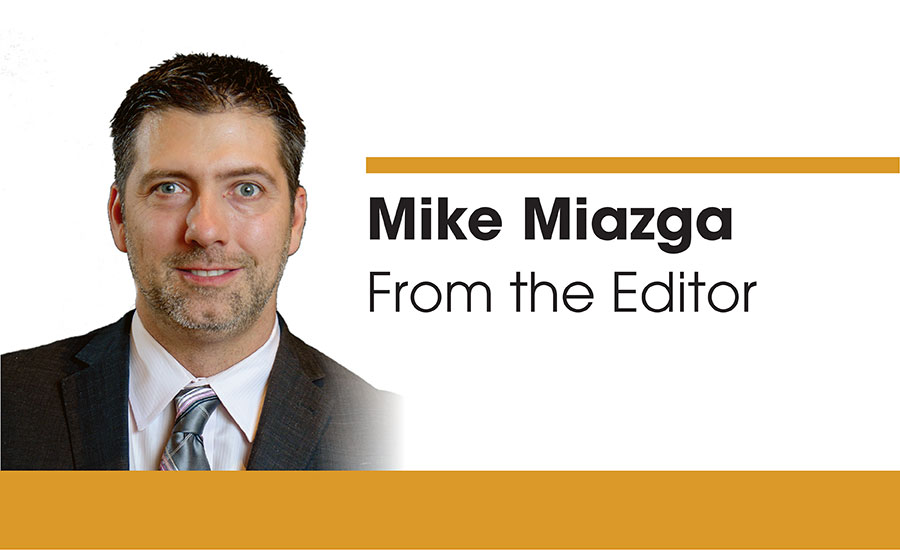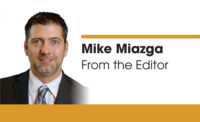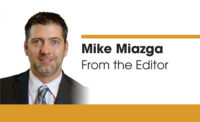The American Supply Association held its annual Legislative Fly-In on Capitol Hill in mid-April. And as I seemingly do every year, here’s my annual message to ASA members who were not in attendance in Washington, D.C.
Make plans to attend one in the future. You are missing out on a great thing.
Each year ASA gives its members a huge opportunity to have their voices heard by their members of Congress on issues that hit extremely close to home for businesses. This year, ASA members discussed topics such as labor force management and workforce policy, infrastructure improvements and to a lesser extent the steel and aluminum tariff issue.
Ahead of meeting with members of Congress, ASA and its government affairs guru Dan Hilton held their usual legislative briefing that included a trio of speakers. Attendees heard from Deputy Assistant to the President Steve Munisteri, Brian Pallasch from the American Society of Civil Engineers and Robyn Boersting from the National Association of Manufacturers.
It was Pallasch’s talk, in particular, that raised some eyebrows. Pallasch, there to speak about infrastructure, passed out ASCE’s 2017 Infrastructure Report Card, subtitled “A comprehensive assessment of America’s infrastructure.”
That assessment revealed some bad news. Just like the kid in school dreading to show mom and dad his or her report card, the same could be said here. The United States grades out at a D+ for its cumulative infrastructure GPA. Looks like no bike or electronic devices for a week.
In the areas germane to the PHCP-PVF industry, the results are equally dismal. Drinking water earned a D grade, while wastewater is slightly better at a D+ rating. When we think of our industry, we tend to mainly think about products and the projects those products are used on. What about the roads, bridges, ports and inland waterways used to transport those products?
You also can forget about using the family car for that big date you had. Bridges rated at a C+, while inland waterways checked in with a D. Ports also earned a C+, while roads (the main mode of transportation in our industry) got a big old D.
These grades are bad enough until you get to the part about cumulative needs by system. ASCE took a look at the current total needs of each infrastructure category in terms of dollars and also listed the estimated funding available and subtracted the two to get the funding gap in each category. The results? Ugh.
Surface transportation is $1.1 trillion short. Yes, trillion. Water and wastewater infrastructure is chasing $105 billion. Inland waterways and marine ports are looking at a $15 billion gap. If you factor in the schools category (where plenty of PHCP-PVF products are installed into) that needs $380 billion to close its gap, the numbers get even bleaker.
ASCE in its most recent study says the U.S. has been paying half its infrastructure bill for some time and that failing to shrink that gap runs the risk of rising costs, failing business productivity, plummeting GDP, lost jobs and reduced disposable income for every American family. If you add all the categories together, the country is staring at a $2.06 trillion funding gap. Ouch.
ASCE’s bad news doesn’t stop there. The study also shows failing to close this investment gap brings serious economic consequences with it, including $3.9 trillion in losses to the U.S. GDP, $7 trillion in lost business sales and $2.5 million lost American jobs by 2025. ASCE adds American families stand to lose upward of $3,400 in disposable income each year, or about 9 bucks a day.
During the Congressional meetings I sat in on, ASA members were vocal about the infrastructure problem. ASA members noted water infrastructure is the third-largest expense for cities after education and emergency personnel and roadway congestion in the United States costs an additional 23 cents a mile to transport goods in an industry that heavily relies on the efficient transport of its products.
ASA is pushing for bipartisan action to pass a comprehensive package that would transform U.S. infrastructure to maintain the country’s competitiveness, and is urging Congress to work together to develop a more reliable, user-based funding system to keep building roads, bridges, transit systems and highways.
The topic of infrastructure hits home in several different ways in this industry and is a prime example of why ASA’s Legislative Fly-In is a critical event to attend. Apollo Flow Controls President and CEO Glenn Mosack put it best during a breakfast meeting prior to the Hill visits.
“If you don’t give them your voice I can promise you nothing will get done,” he said.
What are you waiting for? Make your voice heard.
This article was originally titled “The dreaded report card” in the May 2018 print edition of Supply House Times.




